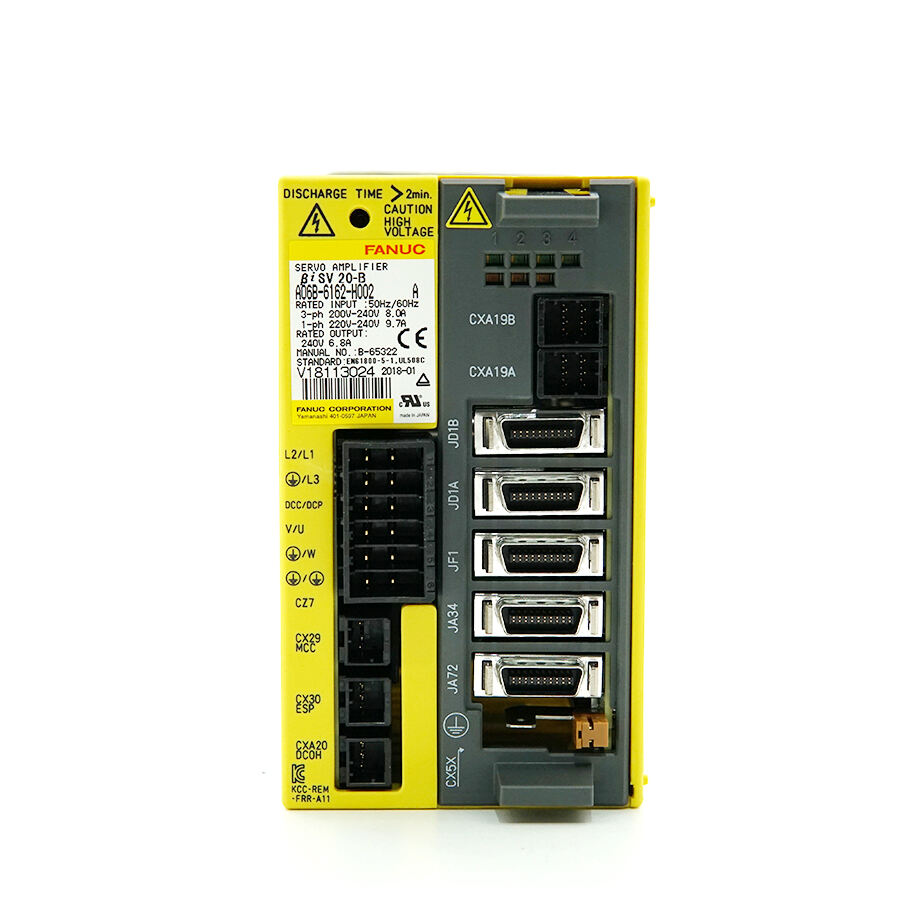Understanding Servo Drive Technology in Modern Industry
The backbone of modern industrial automation lies in precise motion control, and at its heart is the servo drive system. A servo drive acts as the brain behind accurate positioning, velocity control, and torque management in industrial machinery. As manufacturing processes become increasingly sophisticated, selecting the right servo drive has become more critical than ever for optimal performance and efficiency.
In today's competitive industrial landscape, the choice of a servo drive can make the difference between mediocre performance and exceptional productivity. These sophisticated electronic devices regulate the position, velocity, and torque of servo motors, ensuring precise control in applications ranging from packaging machines to robotic systems.
Key Specifications for Servo Drive Selection
Power Requirements and Voltage Considerations
When selecting a servo drive, power requirements stand as a fundamental consideration. The drive must match the power needs of your servo motor while operating within the available power supply parameters. Industrial applications typically require servo drives ranging from a few hundred watts to several kilowatts, depending on the application's demands.
Voltage compatibility is equally crucial, as servo drives must align with your facility's electrical infrastructure. Most industrial servo drives operate on standard three-phase power supplies, though single-phase options are available for lower-power applications. Always factor in voltage fluctuations and ensure the drive can handle peak power demands during acceleration and deceleration.
Feedback and Communication Protocols
Modern servo drives must seamlessly integrate with existing control systems through various communication protocols. The selected drive should support industry-standard interfaces such as EtherCAT, PROFINET, or EtherNet/IP, depending on your automation architecture. This ensures smooth data exchange and real-time control capabilities.
Feedback resolution and compatibility are vital for precise position control. High-resolution feedback devices like absolute encoders or resolvers must be supported by the servo drive to achieve the desired positioning accuracy. Consider the feedback type your motor uses and verify compatibility with potential drive options.

Performance Parameters and Control Features
Dynamic Response and Bandwidth
The dynamic response capabilities of a servo drive directly impact system performance. Look for drives with high bandwidth and fast current loop response times to handle rapid changes in load and position commands. Advanced servo drives offer customizable gain settings and auto-tuning features to optimize performance for specific applications.
Consider the required acceleration and deceleration rates for your application. High-performance servo drives can handle demanding motion profiles while maintaining precise control. The drive's ability to manage inertia mismatches between motor and load is also crucial for stable operation.
Safety Features and Protection Functions
Industrial applications demand robust safety features in servo drives. Look for integrated safety functions such as Safe Torque Off (STO), Safe Stop 1 (SS1), and Safe Limited Speed (SLS). These features help comply with machinery safety standards while protecting both equipment and operators.
Protection functions against overcurrent, overvoltage, and overtemperature are essential for reliable operation. Advanced servo drives often include predictive maintenance capabilities and diagnostic tools to minimize downtime and prevent catastrophic failures.
Environmental and Physical Considerations
Operating Environment Requirements
The industrial environment plays a crucial role in servo drive selection. Consider factors such as ambient temperature, humidity, and altitude when choosing a drive. Some applications may require drives with enhanced cooling capabilities or special environmental ratings.
EMC (Electromagnetic Compatibility) requirements must be evaluated, especially in environments with high electrical noise. Select drives with appropriate EMC filters and shielding to ensure reliable operation in challenging industrial settings.
Installation and Mounting Options
Physical installation constraints can significantly impact servo drive selection. Consider the available panel space, mounting orientation, and cooling requirements. Some applications may benefit from compact drives with book-style mounting, while others might require traditional panel-mount options.
Cable routing and connection accessibility should be evaluated during the selection process. Ensure adequate space for power, feedback, and communication cables while maintaining proper separation between signal and power wiring.
Cost Considerations and Long-term Value
Initial Investment Analysis
While the initial cost of a servo drive is important, it should not be the sole determining factor. Consider the total cost of ownership, including installation, commissioning, and potential training requirements. Higher-quality drives often provide better long-term value through improved reliability and performance.
Factor in the availability of spare parts and technical support when selecting a servo drive manufacturer. A well-supported product can significantly reduce downtime and maintenance costs over the system's lifetime.
Energy Efficiency and Operating Costs
Modern servo drives offer various energy-saving features that can significantly impact operating costs. Look for drives with regenerative capabilities, which can recover braking energy and return it to the power supply. Advanced power management features can optimize energy consumption during both operation and idle periods.
Consider the drive's efficiency ratings and their impact on long-term energy costs. Some manufacturers provide energy calculation tools to help estimate potential savings from different drive options.
Frequently Asked Questions
What is the typical lifespan of an industrial servo drive?
The lifespan of a servo drive typically ranges from 7 to 10 years when properly maintained and operated within specifications. However, this can vary significantly based on operating conditions, maintenance practices, and usage patterns. Regular maintenance and proper installation can extend the life beyond these averages.
How often should servo drives be calibrated?
Servo drives should undergo calibration and performance verification at least annually, though some high-precision applications may require more frequent calibration. Many modern drives feature auto-tuning capabilities that can optimize performance between formal calibrations. Always follow manufacturer recommendations for your specific application.
Can servo drives be retrofitted to existing systems?
Yes, servo drives can often be retrofitted to existing systems, provided proper compatibility analysis is performed. Key considerations include motor specifications, feedback device compatibility, and control system integration. Working with experienced system integrators can ensure successful retrofits while maximizing system performance.
